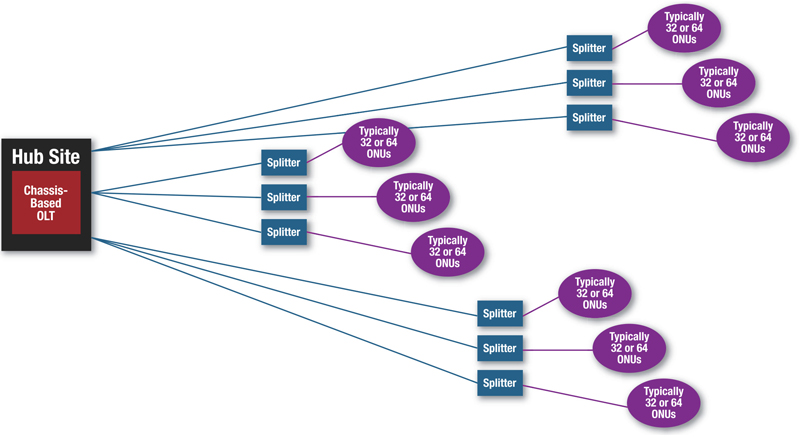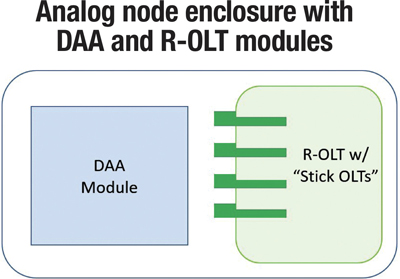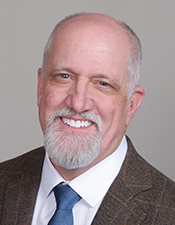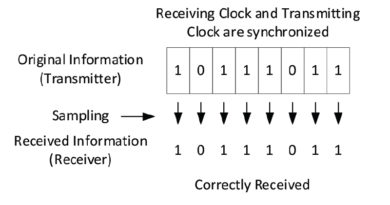Insights to Node Capabilities and Options
By Michael Kloberdans
Cable operators are presented with more options today than ever before in the history of the cable industry. These changes are focused on the access network around the architectural decisions of disaggregating the i-CMTS (integrated cable modem termination system) and driving digital fiber deeper to the subscriber. Whether it is remote PHY (R-PHY), flexible MAC architecture (FMA), or a variant, it is clear that at least the PHY and perhaps the MAC functions are being driven into the node which also extends digital fiber to that node. Along with the disruption of disaggregation, mid-split and high-split technologies present additional considerations, and also DOCSIS® 4.0 full duplex (FDX) and extended spectrum operation are yet another set of options available to achieve higher speeds. Each of these architectures comes with costs of new equipment, evolving the existing plant, modifying the provisioning and monitoring systems and new training demands.
Cable operators now have similar architectural options with the passive optical network (PON). The traditional chassis-based optical line terminal (OLT), located in a headend or hub, can now be disaggregated and/or extend its capabilities deeper into the access network. Like the CMTS, at least the PON PHY functions, and perhaps the MAC, can also be driven to the node. In this article, we examine some PON architectural choices and the tradeoff aspects of complexity, manageability and flexibility.
OLT evolution to R-OLT
Like the DOCSIS CMTS or CCAP, (converged cable access platform) the chassis-based OLT is located in the headend or hub and performs similar DOCSIS management and monitoring functions. Both the CMTS and OLT are very high-capacity points of termination for the premises cable modem (CM) or optical network unit (ONU). Both also broadcast downstream to the premises equipment; however, they are different in the upstream. For example, the PON OLTs allocate periodic time slots for ONUs to transmit whereas cable modems must actively request transmit time from the CMTS. With potentially tens of thousands of CMs, these requests can create contention for a time slot. The other major difference between PON and coax systems is that the PON architecture generally allocates one digital fiber between the last splitter and each ONU, whereas coax systems combine RF signals at each tap on the trunk toward the CMTS. PON is a time allocated and controlled architecture without contention. The reason is that the number of ONUs is restricted to 32, 64 or possibly 128, making a time division scheme practical.

Figure 1. Typical hub-based OLT architecture shown w/o EDFAs
Just as a chassis-based OLT is a Layer 3 device that creates a virtual CM (vCM) for every ONU, the remote OLT (R-OLT) can also perform those same Layer 3 functions, but at a node that is closer to the customer. Note that R-OLTs can have Layer 2-only or Layer 3 capabilities. The Layer 3 R-OLT node serves a smaller number of customers compared to a chassis OLT, but again is deeper within the network. This means that the topology moves from one central hub and spoke design to multiple, smaller hubs and spokes where the R-OLT assumes the role of the chassis OLT, but again, deeper in the access network.
Some advantages of the distributed PON architecture
Manageability:
- Smaller but more domains are created which isolates issues, resulting in easier troubleshooting.
- The overall architecture may be more complex with a Layer 2 R-OLT, but it is simpler to manage than a Layer 3 R-OLT.
Flexibility:
- Being deeper in the access network, it is easier to overlash fiber to a target location than to initiate fiber from the hub or headend.
No added complexity with L3 OLT:
- A Layer 3 R-OLT has the same complexity as a chassis-based OLT, so no new complexity is added.
On the other hand, some of the disadvantages include:
- More points of failure are potentially created.
- More complexity with L2 OLT: A Layer 2 R-OLT adds more complexity because a new, more centralized controller must be created and be maintained by each vendor.
Node transformation and co-residence of PON and coax
So far, the disaggregation similarities between DAA and PON have been presented, but there is a new synergy to discuss: the co-residence of both a PON OLT module and a DAA RPD or RMD module within a repurposed analog node.
Analog nodes were designed as simple medium converters between analog fiber and coax to regenerate the RF signal from the fiber to coax and optical signals from coax to fiber. As a Layer 1 device, its role is straightforward and the technology complexity is relatively low, but DAA has transformed the simple analog node by adding more functionality (DOCSIS PHY or MACPHY functions) and replacing analog signals with digital signals in the fiber. Digital fiber is one of the enablers for the co-residence of R-OLT and DAA (R-PHY/R-MACPHY).
With the shift of moving the CMTS/CCAP PHY layer functions to the node and replacing the fiber usage from analog to digital, less signal degradation will occur and hence higher modulation orders can be supported. Digital fiber enables multiple benefits, such as requiring fewer EDFAs (erbium-doped fiber amplifier), less signal degradation and the future introduction of coherent optics to increase data rates and distances between the headend/hub and the node.
Making nodes smarter and more capable opens the door to even more functionality in the future, including computing resources or other virtual constructs at the node.
- Simple PHY layer and protocol converters
- PHY or MACPHY functions deeper to the subscriber
- Computing possibilities

Figure 2. Typical R-OLT based architecture shown w/o EDFAs
New products are emerging that can add a second module (e.g., R-OLT) into an existing node enclosure that already contains an R-PHY or R-MACPHY module — a ‘hybrid’ node. Some of the existing analog nodes can then be repurposed to accommodate R-PHY or R-MACPHY modules and a R-OLT. This co-residence option is ideal for selective subscriber migration, where an optical network is introduced to an existing coax network, commonly called a “brownfield” location.
Selective subscriber migration is a concept that serves fiber customers in existing coax networks and hence continues to capitalize on the value of the existing coax network while introducing fiber networks gradually.
Because space and power are limited in a node enclosure, the R-OLT module can be a Layer 2 device where the control and management functions are located within the boundaries of the network. Depending on the operator, these functions can be located within a hub, headend, regional data center or elsewhere. These functions can be virtualized which further saves space and power.
To address node space and power constraints, a popular R-OLT form factor is an “OLT on a stick,” which looks like a large SFP+ transceiver that fits into a standard SFP receptacle cage, but the larger heatsink fins remain outside the cage. This is possible because only the PHY functions are resident in the SFP+ product.
This form factor is a gradual and targeted migration process, where traditional analog nodes can be transformed by replacing the node components with a newer technology such as both DAA and adding an OLT module that contains one or more “stick OLTs” as the needs of local areas change. Another very attractive option with this new infrastructure is that the node can easily change over time to add more stick OLTs or higher PON speeds.

Figure 3. Node enclosure with coexisting modules
Hybrid nodes can introduce many advantages including:
- Simpler operations:
-
-
- Fewer physical nodes (e.g., separate DAA and R-OLT nodes) on the network to maintain and troubleshoot.
- Stick OLTs are easier to manage with a common controller at a central site.
- Automation through a common controller has scaling benefits.
- Legacy node enclosures are well-known to technicians.
Investment protection: Repurposing analog nodes saves money in hardware costs. Precise implementation to cover incremental needs of: - Competitive pressures
- High bandwidth customers
- Early, high-symmetrical deployments
- MDU and SMB opportunities
-
-
On the other hand, having hybrid nodes can have multiple challenges including:
- Potentially more systems to operate:
- New, and perhaps virtual, components are needed to manage PHY-based components.
- New OSS needed for tracking and monitoring.
- New training and skill sets are needed for both backend system and node support.
- Complexity:
- Legacy node enclosures can have additional components.
- Troubleshooting may involve both RF and optical issues.
Summary
Cable operators have many tools in their toolkit to provide higher speeds and symmetrical bandwidth offerings to customers. In particular, DAA enables increased modulation orders by driving PHY/MACPHY functionality closer to the customer and utilizing digital fiber. Another tool is collocating R-OLT and PHY/MACPHY modules, which offers cost-effective flexibility by repurposing existing analog node enclosures to offer new services using selective subscriber migration strategies. With the many options available, operators are well positioned to serve their existing and future customers.

Michael Kloberdans,
Principal Engineer,
Charter Communications
Michael Kloberdans is an Architect in the Access Network division at Charter Communications in Denver Colorado. Over the last five years, he has created and distributed requirements for several products including Charter’s branded ONU used in residential, SMB and RDOF architectures, and distributed access architecture RMD/RPD modules that are being shared with vendors for development and deployment. Michael holds 12 patents and is a member of the SCTE Rocky Mountain Chapter.
Images provided by author

